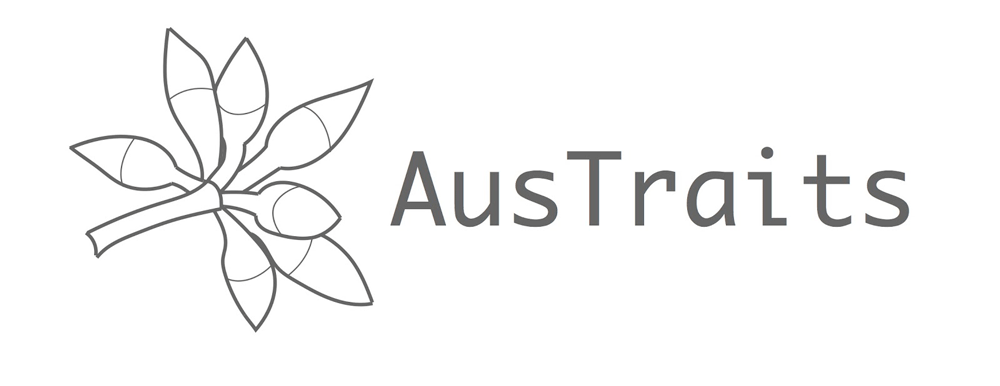Online Resources
Occurrence records map (0 records)
Datasets
datasets have provided data to the Atlas of Living Australia for this subspecies.
Browse the list of datasets and find organisations you can join if you are interested in participating in a survey for species like Vigna unguiculata subsp. cylindrica ()
Types
Specimens
Images
Misidentified

Names and sources
| Accepted Name | Source |
|---|---|
| Vigna unguiculata subsp. cylindrica () |
|
| According to:Council of Heads of Australasian Herbaria (2011), Australian Plant Census | |
| Published in:Verdcourt, B. (1970), Studies in the Leguminosae-Papilionoideae for the 'Flora of Tropical East Africa': IV. Kew Bulletin 24(3) [544] | |
|
Place of publication of the name Phaseolus cylindricus L. is sometimes attributed to Herb. Amboin. 23 (1754), but the name appears in the left-hand column on that page, and is therefore invalidly published according to ICBN Art. 34.1, Ex. 2 (2006). Authorship of the name Vigna unguiculata subsp. cylindrica is erroneously attributed to "(L.) van Eseltine" in Kew Bull. 24(3): 544 (1970). B.Verdcourt later published a correction in Kew Bull. 31(4): 836 (1977). |
|
| Synonym | Source |
|---|---|
| Vigna unguiculata var. cylindrica () homotypic |
|
| Published in:Ohashi, H. in Hara, H. (1975), Flora of the Eastern Himalayas, 3rd Report [306] | |
| Vigna cylindrica () homotypic |
|
| Published in:Skeels, H.C. (1913), Seeds and plants imported during the period from January 1 to March 31, 1912: Inventory No. 30; Nos. 32369 to 33278. United States Department of Agriculture, Bureau of Plant Industry. Bulletin 282 [32] | |
| Vigna sinensis var. catjang () heterotypic |
|
| Published in:Chiovenda, E. (1908), Annali di Botanica, Rome 8 [438] | |
| Vigna catjang () heterotypic |
|
| Published in:Walpers, W.G. (1839), Animadversiones Criticae in Leguminosas Capenses. Linnaea: ein Journal für die Botanik in ihrem ganzen Umfange, oder Beiträge zur Pflanzenkunde 13 [533] | |
| Dolichos catiang heterotypic orth. var. |
|
| Published in:Linnaeus, C. (October 1771), Mantissa Plantarum Altera [2] [269] | |
| Dolichos catjang heterotypic |
|
| Published in:Burman, N.L. (1768), Flora Indica: cui accedit series zoophytorum indicorum, nec non Prodromus Florae Capensis [161] | |
| Phaseolus cylindricus homotypic |
|
| Published in:Linnaeus, C. (November 1759), Amoenitates Academicae 4 [132] | |
| Name | Source |
|---|---|
| Vigna unguiculata subsp. cylindrica () accepted |
|
|
Place of publication of the name Phaseolus cylindricus L. is sometimes attributed to Herb. Amboin. 23 (1754), but the name appears in the left-hand column on that page, and is therefore invalidly published according to ICBN Art. 34.1, Ex. 2 (2006). Authorship of the name Vigna unguiculata subsp. cylindrica is erroneously attributed to "(L.) van Eseltine" in Kew Bull. 24(3): 544 (1970). B.Verdcourt later published a correction in Kew Bull. 31(4): 836 (1977). |
|
| Identifier | Source |
|---|---|
| https://id.biodiversity.org.au/node/apni/2908268 Taxon current |
|
| https://id.biodiversity.org.au/name/apni/239361 Scientific Name current |
|
| http://id.biodiversity.org.au/node/apni/2908268 Taxon unknown |
|
| https://id.biodiversity.org.au/instance/apni/750602 Taxon Concept current |
|
Classification
- kingdom
- Plantae
- phylum
- Charophyta
- class
- Equisetopsida
- subclass
- Magnoliidae
- superorder
- Rosanae
- order
- Fabales
- family
- Fabaceae
- genus
- Vigna
- species
- Vigna unguiculata
- subspecies
- Vigna unguiculata subsp. cylindrica
Charts showing breakdown of occurrence records (0 records)
Name references found in the Biodiversity Heritage Library
| Data sets | Licence | Records |
|---|

The trait data shown here are a selection from AusTraits, an open-source, harmonised database of Australian plant trait data, sourced from individual researchers, government entities (e.g. herbaria) or NGOs across Australia. Traits vary in scope from morphological attributes (e.g. leaf area, seed mass, plant height) to ecological attributes (e.g. fire response, flowering time, pollinators) and physiological measures of performance (e.g. photosynthetic gas exchange, water-use efficiency.)
These traits are a sampler of those available in AusTraits. The data presented here are summary statistics derived from all field-collected data on adult plants available from AusTraits. Since the data presented are derived from the wide variety of sources in AusTraits, both the numeric trait statistics (min, mean, max) and categorical trait summaries (frequency of each trait value) that have been merged together could include data collected using different methods. The values presented for this species may reflect a summary of data from one or many sources, one or many samples from one or many adult plants at one or many locations. They may therefore differ from those presented elsewhere on the ALA platform and users are encouraged to download a spreadsheet of the full AusTraits data for this species via the download CSV button to view the accompanying details about the data sources before further use.
Categorical Traits
* Data sources in AusTraits report multiple values for this trait, suggesting variation across the taxon's range and life stages. Please download the raw data with information about the context of data collection to assess whether they are relevant to your project.| Trait Name | Trait Value | Definition |
|---|
Numeric Traits
| Trait Name | Min | Mean | Max | Unit | Definition |
|---|
